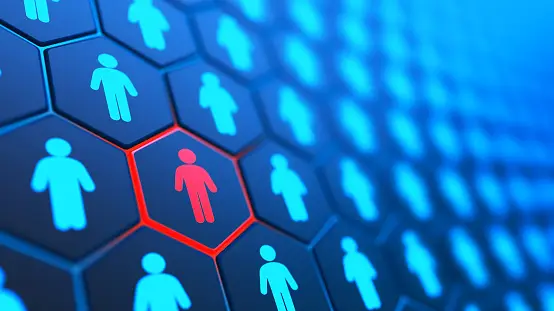Explore the hidden dangers of the internet with our in-depth article, “Lurking in the Shadows.” Uncover the risks of cyber threats, misinformation, online predators, privacy breaches, and digital addiction. Stay informed and protect yourself from the unseen perils of the digital world. Read now for safe browsing tips.
Identity Theft
Cyber criminal activities especially identity theft has continued to rise in the current world where information is accessible through the click of button. This is widely defined as the illicit acquisition and use of another person’s personal information; this is frequently carried out with the goal of making a profit. This could be containing personal data like social security numbers or passwords of credit card accounts or even bank accounts. Identities theft is something no one wants to experience; it comes with a lot of damage to one’s credit rating, a significant amount to be paid back with a long process of restoration. Some of the problems may include; The presence of transactions the victims have no knowledge of, accounts that were opened in the victims’ names, and personal information being used in ways that are unlawful to the victim.
Unfortunately this crime is gradually increasing; therefore, combating identity thefts requires one to be active. They include checking financial statements and accomplishing or keeping a track, using strong and different passwords, and the overall careful use of the Internet offering and its Identity Details & Passwords. In the same regard, facilities such as credit check and fraud protection are other protective measures that can be sought. It is also equally wise to know the fallout of identity theft, for instance, bills coming in, being rejected in an application for credit, among others, so that one can start managing the situation.
Data Breaches
Cyber security threats such as data breaches are now rampant in organizations and are experienced across manufacturing companies irrespective of their size, and results in the exposure of PII on a large scale. Such break-ins can be a result of hacking, phishing attacks, or even some individuals within the organizations who are wet behind the ears and give in to temptation. The implications of data breach affect many people whose data is leaked and also organization that has to suffer loss in reputation together with possible legal consequences. In the case of individuals, it results in identity theft, fraud other than money and an undeniable violation of privacy.
The safety of the information can be prevented adequately by implementing measures on various layers. These represent measures put in place in organizations to prevent and combat cyber threats such as firewalls; encryption; security checks. People have to be careful about things that they post on the Internet and be aware of new forms of hazards. When there is data leakage, the parties that are involved should be informed immediately and then measures should be put in place to cover the gaps to ensure that a similar thing does not happen in future.
Malware and Viruses
Malware and viruses are some of the well-documented threats in the world of Internet operation. The term Malware is an abbreviation for malicious software, which is a sort of virus intended to harm or exploit every programmable device, service, or network. The motives of the hackers may differ; that is why malware is created for different goals, including stealing personal data, informational warfare, or vandalism. Viruses are one of the sub categories of the malware especially due to their capacity to self replicate and to propagate to other computers without having the owner’s consent to do so. These can infect a file, turn a computer system into their command, or even make a devise completely useless.
One should always ensure they have the best antivirus installed on their computer and is up-to-date with the virus database. It is easily possible to get rid of the malicious software if the operating system scans are carried out periodically. Also, safer Internet usage should be employed, for instance, refraining from clicking on potentially risky links or downloading questionable files. Ensuring that programs and operating system are also up to date is also crucial as patches usually contain security features against new threats.
Phishing and Scam Emails
Phishing is a form of online fraud that to intents of deceiving or tricking persons into providing their personal details, typically through a link in an email that was crafted to look and feel like it came from a genuine sender or company like a bank or a retail store. These messages refer to various topics and usually come with a call to action by clicking on a link, or by giving out personal information. They may also deceive the victim thru emails that will give them some rewards or threaten them to an extent of answering the email. The impacts that one can suffer having been trapped by a phishing attempt may result in loss of cash to impersonation.
To prevent receiving phishing and scams emails, the given advice suggests to minimize the trust to all received emails, if they suggest entering personal information, or following links to unidentified Web-sites. It is important always to check the sender of an email and the more especially for the ones, which contains grammatical errors or misspelled words. It is also safe to surmise that instead of merely following links on emails, it is better to just type the URLs of the sites in the browser directly. One can minimize the chances of such cons by applying email filters and, in general, reporting phishing activities.
Fake Websites
Some of the commonly used techniques by cyber attackers are fake websites since this attackers’ major goal is to deceive anyone who is linked to the internet. These websites’ interface is a replica of genuine websites and are aimed at making people submit their details or download hostile applications. Sometimes its used in connection with phishing where the perpetrator or group ulterior motive is to capture entering login information or monetary information. Complicated fakes even have features that may be hard to differentiate with actual, genuine websites thus embody a significant risk of fraud or identity theft to innocent users.
Precautions for fake websites include; extra caution when entering the website address by one should ensure to enter the correct web address without any missing characters or wrong extension of the domain name. The sites accessible only, using SSL/SFH protection must use HTTPS in the address line that is depicted by the padlock icon. It is also right to setup safety features within the web browsers that will be able to detect web sites which are unfamiliar or malicious. By default, it can be wise not to type in any of your details and to carefully assess the site’s credibility in a different way.
Online Scams
Cyber frauds and scams come in so many types and continue to change in an endless cycle to take advantage of the ignorance or the trust of the Internet users. This type of scams that could be conducted through the internet for instance fake trade sites and hence involve people conning others into parting with cash or their identity. The outcomes of becoming an identity theft victim depend on the type of attack and may range from a monetary point of view, such as direct monetary loss, losing money to scammers, and direct nonmonetary costs, including the costs of restoring one’s sense of identity and feeling betrayed. Another common trick that scammers employ is to appeal to the reason of the target through facing of inducement to release money or personal information.
This makes it relevant to notice that individuals ought to be careful when it comes to online scams and particularly when dealing with extremely attractive offers. Scammers could be fake companies or fake individuals and they can be fixed by ensuring that one verifies the legitimacy of a company or a person before dealing with them. It is also good to be aware of some of the tricks that scammers use and try to listen to the inner voice inside our heads especially if the voice says something is wrong, it probably is. Avoiding phishing schemes can also be effective in against online scams Such as employing secured payment channels and avoiding disclosure of personal details.
Inappropriate Content
Social networks are filled with a great number of materials, but not all of them should be shared with specific audiences or using specific days. This covers such topics as violence, pornography, racism, and any other that is regarded as improper for consumption. The age of freedom is evident with many exposing this content especially to children and the youths who end up being negatively influenced. Due to the ubiquitous nature of the internet, it is almost impossible to seal oneself or one’s family from any thing abusive.
In an effort of avoiding such content it is advisable to consider the use of parental control software. These are tools which enable parents to block specific sites and monitor and guide the kids on what they are doing online. Another prominent issue under the umbrella of Internet safety for children is to raise awareness of the dangers that the Internet may pose to the kids and to foster actual discussions with such children regarding their experiences on the World Wide Web. Adults can avoid this by customizing particular filters and being very selective when it comes to the websites that they end up visiting.
Cyber Bullying
Peer aggression in the context of the current study is cyber bullying and it occurs through computer, mobile phones and tablets among others. It can be through ,Text message or apps, or on the internet in social sites, chat rooms, or even in games where people can view, contribute to, or forward information. Cyber bullying involves forwarding, posting or publishing of undesirable, unfriendly, untrue or unpleasant information about another person. It can involve passing information about another person which is personal or private in nature and which thus embarrasses or humiliates the subject.
In efforts to safeguard against cyber predators, the importance of preserving online privacy is paramount. This entails refraining from disseminating personal data, encompassing full names, residential addresses, and telephone numbers, to unfamiliar parties. It is advisable that parents exercise oversight regarding their progeny's digital engagements and impart knowledge pertaining to the perils associated with interactions involving unidentified individuals.
Conclusion: Navigating the Digital Wilderness Understanding the dangers that lurk in the shadows of the internet is the first step toward safeguarding ourselves. By adopting robust security measures, critically evaluating information, and setting boundaries on our internet usage, we can navigate the digital wilderness with confidence and caution.


























